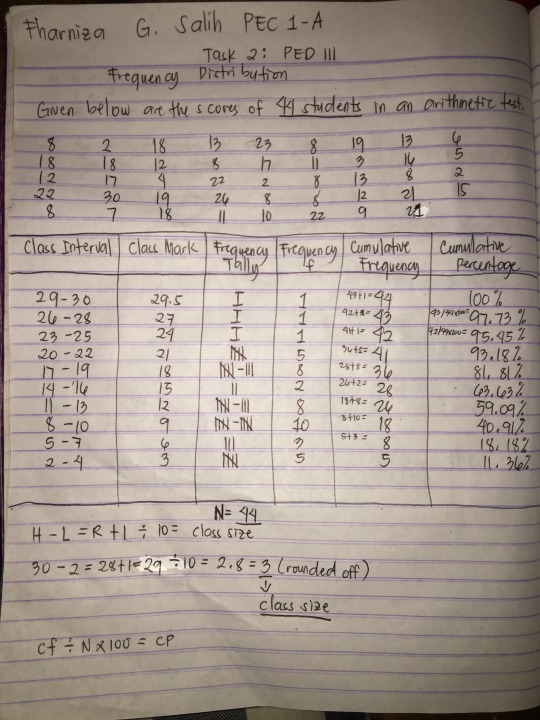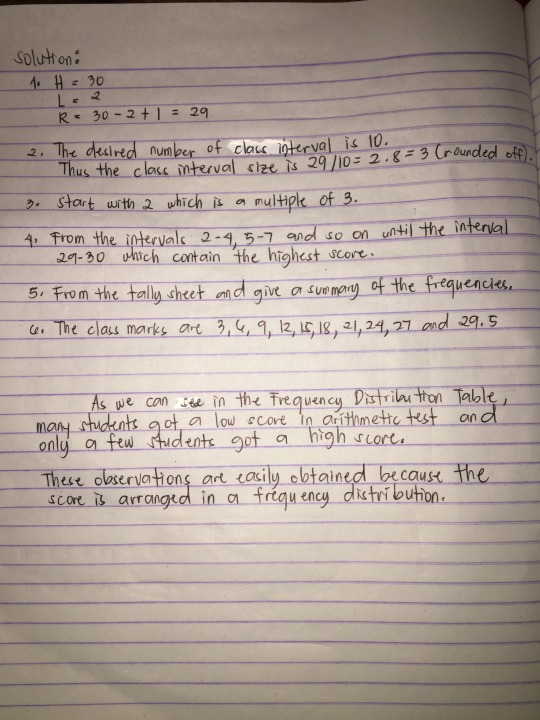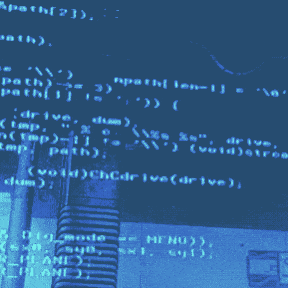#task2
Audio
3 notes
·
View notes
Text
“My stand about Plagiarism, Piracy,
Bias Media, and the like”
Task 2 Lesson 7
In a new generation of ICTs, systems, and media formats have emerged as a result of the evolution of the media over time. It revolutionized how knowledge is shared globally, but it also had unintended effects that have had a significant impact on how we use, consume, and share media. My stand about plagiarism, piracy, bias, and the like understanding these formats shows robbed documents, information, news, etc.. These contains by the law of its own. In my pov it is nice to have guidance from the people around you, these maybe hacked by other people who are expert to handle computers and internet.
0 notes
Text

Poppy Pepp || General Aesthetic 1/?
1 note
·
View note
Photo

Missions 1, 2 and 3 interpreted by Janneth Alegre 🇵🇪 90 days challenge Tr cutting with Shingo Sato #trcutting #shingosato #trscholarship #trGoldMasterChampionship2022 #Task1 #task2 #task3 #trcutting #mission1 #mision2 #mision3 #jannethalegre #reto1 #reto2 #reto3 #90DaysChallenge https://www.instagram.com/p/Cgf6w-zOQrL/?igshid=NGJjMDIxMWI=
#trcutting#shingosato#trscholarship#trgoldmasterchampionship2022#task1#task2#task3#mission1#mision2#mision3#jannethalegre#reto1#reto2#reto3#90dayschallenge
0 notes
Text
Eesha Sharma as the Daughter of Inanna

3 notes
·
View notes
Text
Task 2: Frequency Distribution Table


0 notes
Text
jobscope yang paling saya suka dekat kedai adalah admin. yang paling tak suka? ofc sales hahah.
walaupun dekat sini cuma ada 2 level sahaja pharmacist dan assistant, tapi banyak task2 admin diberikan pada saya.
suka juga kalau semua documentation barang sampai saya yang uruskan dari a to z. cek barang, sign, buat grn dan pricing. kadang kadang rasa macam kalau 2 orang pun actually sangat cukup (tapi tambah gajilah sksksk)
2 notes
·
View notes
Text
Real-world applications of scheduling algorithms in Python

Scheduling algorithms in Python have a wide range of real-world applications, including:
1. Real-time systems: Scheduling algorithms are used to ensure that real-time tasks are executed within their specified timing constraints, preventing potential system failures or losses. They also allocate system resources effectively, ensuring efficient utilization of processor time, memory, and other resources.
2. Staff scheduling: Scheduling algorithms are used to schedule staff members for different time windows and tasks in various settings, such as coffee shops or hospitals. They aim to minimize the number of workers per shift while ensuring that there are enough workers for each time window.
3. Resource allocation: Scheduling algorithms are used to optimize resource allocation strategies, whether it’s for scheduling appointments, managing resources, or any other similar real-life application. By utilizing these algorithms, users can save time and resources and improve their overall efficiency.
4. Surgery scheduling: Scheduling algorithms are used to optimize surgery scheduling in hospitals, ensuring that surgeries are scheduled efficiently and effectively. Linear programming is one such algorithm that can be used to formulate models in Python for surgery scheduling.
5. Manufacturing: Scheduling algorithms are used to allocate jobs on a manufacturing line, ensuring that resources are utilized efficiently and effectively.
These are just a few examples of the many real-world applications of scheduling algorithms in Python. By leveraging the power of these algorithms, organizations can improve their efficiency, reduce costs, and optimize their resource allocation strategies.

Scheduling algorithms play a crucial role in various real-world applications where tasks need to be organized efficiently. In Python, scheduling algorithms are commonly used in job scheduling, task assignment, resource allocation, and optimization problems. Here are two snippets of Python code combined with AI to demonstrate a practical example of scheduling algorithms:
Task Scheduling using Genetic Algorithm in Python
```python
import random
# Define tasks and their durations
tasks = {'Task1': 4, 'Task2': 3, 'Task3': 2, 'Task4': 5}
# Genetic Algorithm for Task Scheduling
def fitness_function(sequence):
total_time = 0
for task in sequence:
total_time += tasks[task]
return total_time
def generate_random_schedule():
return random.sample(tasks.keys(), len(tasks))
def genetic_algorithm(num_generations):
best_schedule = generate_random_schedule()
best_fitness = fitness_function(best_schedule)
for _ in range(num_generations):
new_schedule = generate_random_schedule()
new_fitness = fitness_function(new_schedule)
if new_fitness < best_fitness:
best_schedule = new_schedule
best_fitness = new_fitness
return best_schedule
# Run Genetic Algorithm for Task Scheduling
best_schedule = genetic_algorithm(100)
print("Best Schedule:", best_schedule)
```
Job Scheduling using Reinforcement Learning in Python
```python
import numpy as np
# Define job processing times
jobs = np.array([3, 5, 2, 7, 4])
# Reinforcement Learning for Job Scheduling
def get_action(state, q_table, epsilon):
if np.random.uniform(0, 1) < epsilon:
return np.random.choice(len(jobs))
else:
return np.argmax(q_table[state])
def update_q_table(q_table, state, action, reward, next_state, alpha, gamma):
q_table[state, action] += alpha * (reward + gamma * np.max(q_table[next_state]) - q_table[state, action])
# Initialize Q-table
q_table = np.zeros((len(jobs), len(jobs))
state = 0
epsilon = 0.1
alpha = 0.1
gamma = 0.9
# Reinforcement Learning Loop
for _ in range(1000):
action = get_action(state, q_table, epsilon)
next_state = action
reward = -jobs[action]
update_q_table(q_table, state, action, reward, next_state, alpha, gamma)
state = next_state
# Get the optimal job sequence
optimal_sequence = np.argsort(-q_table[state])
print("Optimal Job Sequence:", optimal_sequence)
```

These examples showcase how scheduling algorithms can be implemented in Python using AI techniques like genetic algorithms and reinforcement learning to optimize task scheduling and job sequencing in real-world scenarios.
RDIDINI PROMPT ENGINEER
0 notes
Text
What is your favorite gadget?
I go for Mobile Phone. Why? Because Mobile Phones are sufficient to use, it is handy and easy to bring. Mobile Phones are multimedia, you can broadcast, it has a good quality of camera, you can download mobile games, notes, social medias, timer, google, calendar, calculator, etc.. The disadvantage in this mobile phone is, it has limited storage, it depends on a phone that you're using. Mobile phones are more accessible than laptops, computers, tablets, because mobile phones are public friendly. You can bring it outside even you only have purse to use. It has anything to do with mobile phone,, you can do powerpoint, reports, presentations, online classes, especially me (a student or faculties) needed because of the Covid-19. I like it, because everywhere i go i can still communicate using my data. When it come to spending, it is more light in our wallets, because some smartphones are cheap or we can afford to buy.
0 notes
Text
How to Run Your Python Code Concurrently Using Threads

Python is a powerful language that allows developers to create a wide range of applications, from web development to data analysis. However, when it comes to running code concurrently, Python can be a bit limited. One solution to this problem is to use threads. In this article, we will discuss what threads are, how to use them, and some best practices for using them effectively in Python.
What are Threads?
Threads are a way to run multiple tasks concurrently within a single program. A thread is a separate flow of execution within a program, which means that multiple threads can be executed simultaneously. Each thread runs independently and can perform its own tasks, but they share the same memory space.
Threads can be used to improve the performance of a program by allowing it to execute multiple tasks at the same time. This is particularly useful for tasks that are I/O-bound, meaning that they spend a lot of time waiting for input/output operations to complete, such as reading or writing files, making HTTP requests, or querying a database. If you're looking for training in python, then you can check out our Python course in Bangalore.
Using Threads in Python
Python has a built-in module called threading that allows developers to create and manage threads. To use threads in Python, you need to import the threading module and create a new Thread object for each task you want to run concurrently. Here is an example:
ruby
Copy code
import threading
def task1():
# code for task1
def task2():
# code for task2
# create threads
thread1 = threading.Thread(target=task1)
thread2 = threading.Thread(target=task2)
# start threads
thread1.start()
thread2.start()
# wait for threads to finish
thread1.join()
thread2.join()
In this example, we define two functions task1 and task2, which represent the tasks we want to run concurrently. We then create two Thread objects, one for each task, and start them using the start method. Finally, we use the join method to wait for both threads to finish before the program exits.
Best Practices for Using Threads
When using threads, there are a few best practices you should follow to ensure that your program runs smoothly and efficiently:
Avoid shared data: Since threads share the same memory space, it's important to avoid accessing shared data concurrently to prevent race conditions and other synchronization issues. If you need to share data between threads, use thread-safe data structures such as locks, queues, or semaphores.
Use the right number of threads: Creating too many threads can actually slow down your program, as the overhead of managing multiple threads can become significant. Try to find the right balance between the number of threads and the tasks you want to run concurrently.
Prioritise tasks: If you have tasks that are more important than others, you can use thread priorities to ensure that they are executed first. However, be careful not to starve other threads of resources. If you're looking for training in react native, then you can check out our react native course in Bangalore.
Use a thread pool: Creating and managing threads can be expensive, especially if you have many short-lived tasks. Consider using a thread pool to reuse threads and reduce overhead.
Conclusion
Using threads is a powerful way to run multiple tasks concurrently in Python. It can improve the performance of your program, especially for I/O-bound tasks. However, using threads requires careful consideration of shared data, thread priorities, and the number of threads. By following these best practices, you can use threads effectively and avoid common pitfalls.
0 notes
Photo

Segunda tarea - Reto 2 - Interpretación propia con Concepto TR. Second task- Mission 2 - Own interpretation through TR concept by Janneth Alegre 🇵🇪 #trcutting #shingosato #trscholarship #trGoldMasterChampionship2022 #task2 #secondtask #trcutting #mission2 #jannethalegre #reto2 #90DaysChallenge #approved https://www.instagram.com/p/CfPwSOfulVP/?igshid=NGJjMDIxMWI=
#trcutting#shingosato#trscholarship#trgoldmasterchampionship2022#task2#secondtask#mission2#jannethalegre#reto2#90dayschallenge#approved
0 notes
Text
The first day was full of new impressions and information, but also very frustrating, as there were a lot of technical difficulties. Working on a Mac for the first time ever didn't exactly help. I came back ass tired and went to bed 8pm even tho I was actually pretty curious to complete the first task. Woke up to find discord flooded with messages that didn't make sense until I figured out people had already started task2... I am still somewhat excited to go to the campus today...
0 notes
Photo

IELTS Writing Task 2.
In their advertising, businesses nowadays usually emphasize that their products are new in some way.Why is this? Do you think it is a positive or negative development?
Sample Answer:
INTRODUCTION:In the present time, advertisements are merely the attraction, nothing sells without a fascinating advertisement. Brands emphasize new elements in their products and services more often to get ahead in the highly competitive market. This can lead to both negative and positive developments to advertisements and markets.
BODY PARAGRAPH: 1
Firstly, the overemphasize of products and services are considered as gimmicks, used merely to attract the consumers. Brands try to attract the consumers by adding certain elements to the products which are neither necessary nor beneficial and sometimes even bad for the product. For example cosmetic companies had been caught promoting their product by advertising some new hair product which contains parables. Parables are actually not good for hair. So, these kinds of gimmicks leave a negative impact.
Visit the website for full length sample answer and for other writing topics
Here: https://oxygenforenglish.com/topic-5-in-their.../
For more writing sample answerwww.oxygenforenglish.com#ielts #writing #task2 #task2ielts #writingtask2 #ieltswriting #ieltswritingtask2
1 note
·
View note





